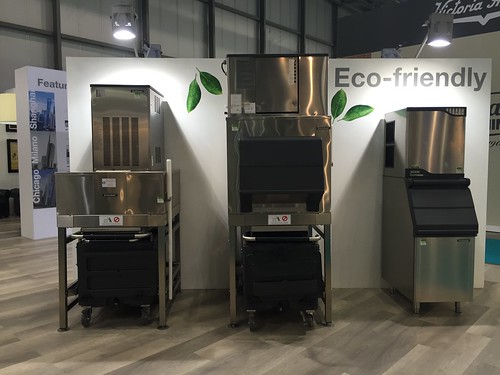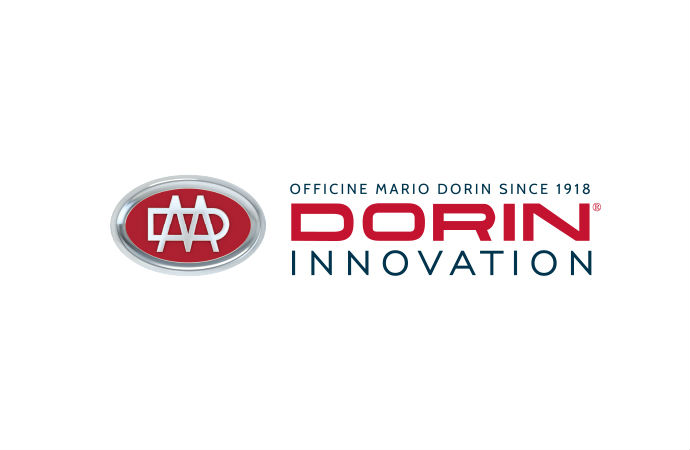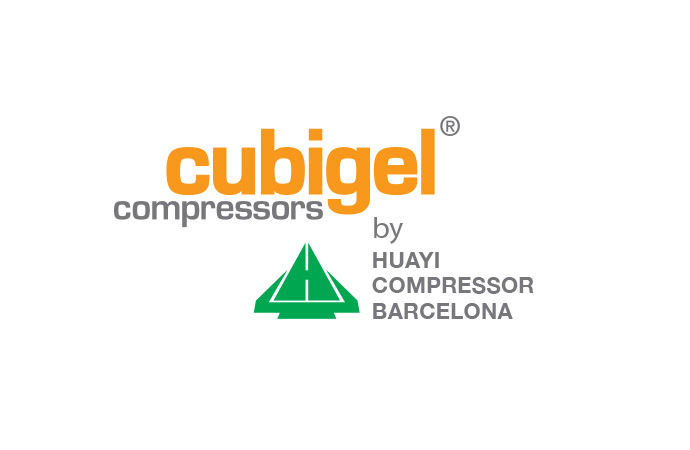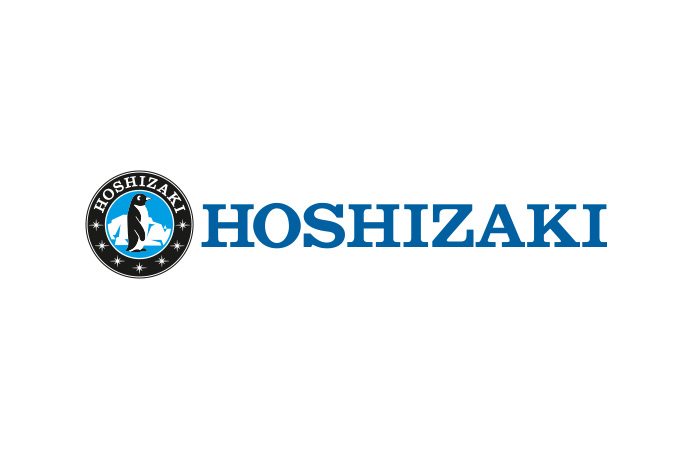In Part 2 of this article, leading technologies including ice makers, watercoolers and commercial refrigeration equipment using hydrocarbons and CO2 are explored at HOST Milano 2015. Manufacturers such as Dorin, Blupura, Hoshizaki and Rivacold comment on industry trends for natural refrigerants in the Ho.Re.Ca. sector. +PHOTOS

In a roundtable event hosted by the Assofrigoristi on Natural Refrigerants, Giacomo Pisano, Technical Commercial Manager at Dorin remarked, “There is no definitive solution today, if not that of natural refrigerants. Supermarkets, to name one application, want to find long-term and future proof solutions.”
Fortunately, besides the benefits of natural refrigerants already mentioned, they also present a compelling business case, generating an increasingly collective commitment from manufacturers and end users.
Water coolers: Blupura
The Blulink centralised water system, the innovative focus for Blupura at HOST, offers still and sparkling filtered water through dispensers installed on different floors of a building. The compact and fully stainless steel Blusoda, using R600a Cubigel compressors, is one of the smallest water coolers on the market suitable for domestic and Ho.Re.Ca applications.
Compressors and Refrigeration Equipment: Dorin & Rivacold
At the heart of refrigeration equipment: the compressor. Italian leader Dorin exhibited select models of the popular CD Series of CO2 semi-hermetic compressors. Models CDB/CDM are suitable for application at PSs 100 bar and PS 150 bar, with displacement from 1.12 to 53.20 m³/h and engineered for systems with Tc greater than 22°C.
Rivacold, manufacturer of commercial and industrial refrigeration equipment, showcased its R290 condensing units and packages units for cold rooms, tables, counters and refrigerated cabinets; a R290/CO2 cascade system for low-temp applications, and copper tube heat exchangers using natural refrigerants.
Ice Machines: Hoshizaki, ITV, Scotsman & Brema
A force to be reckoned with in the field of ice maker technology, Hoshizaki launched its Emerald Class using R290, which includes four models in the FM Range producing flake ice and nugget ice, and five models in the IM Range producing cube ice. The Emerald class lowers energy costs and also uses less water, which helps compensate for the still slightly higher purchase price in some European markets.
However, in some markets such as the UK, hydrocarbon machines have reached parity in cost:
According to Andreas Eichler, Dep. Director After Sales & Product at Hoshizaki Europe, one of the main challenges is that end users are not looking at what refrigerant the machines use, they are only looking at the price. “So as one of the biggest players in the world, we have to drive the market and inform them of reforms, taxes etc., in order to avoid complaints in the future.”
The same goes for the training of service companies. Since there is currently no regulation in the EU that service companies have to be informed on natural refrigerants, the manufacturer must work in close collaboration with the training institutes that educate the technicians.
In regards to the 150g charge limit, Eichler explained that it’s not an issue for now. “With 150g charge limit we are the company that can produce the most ice, which is 450kg. But if the charge limit goes up we can do more.”
Brema, ITV, and Scotsman Ice also displayed eco-friendly lines of hydrocarbon ice makers, complementing the trend: they’re almost standard. These 3 companies also offer split CO2 ice makers for connection to dedicated or centralised refrigeration systems.
click on the image below to see all photos.

Fortunately, besides the benefits of natural refrigerants already mentioned, they also present a compelling business case, generating an increasingly collective commitment from manufacturers and end users.
Water coolers: Blupura
The Blulink centralised water system, the innovative focus for Blupura at HOST, offers still and sparkling filtered water through dispensers installed on different floors of a building. The compact and fully stainless steel Blusoda, using R600a Cubigel compressors, is one of the smallest water coolers on the market suitable for domestic and Ho.Re.Ca applications.
Compressors and Refrigeration Equipment: Dorin & Rivacold
At the heart of refrigeration equipment: the compressor. Italian leader Dorin exhibited select models of the popular CD Series of CO2 semi-hermetic compressors. Models CDB/CDM are suitable for application at PSs 100 bar and PS 150 bar, with displacement from 1.12 to 53.20 m³/h and engineered for systems with Tc greater than 22°C.
Rivacold, manufacturer of commercial and industrial refrigeration equipment, showcased its R290 condensing units and packages units for cold rooms, tables, counters and refrigerated cabinets; a R290/CO2 cascade system for low-temp applications, and copper tube heat exchangers using natural refrigerants.
The future is clear, it will be natural refrigerants, but the intermediate solution is not that clear,” said Francesca Giombini, Marketing Manager. “Italy has been a bit slow in adopting natural solutions, but in EU the Ho.Re.Ca industry is demanding CO2 and hydrocarbons,” Giombini added, with regards to Rivacold’s strongest growth markets being the UK, Germany and Spain, and Ho.Re.Ca making up approximately 40% of that business.
Ice Machines: Hoshizaki, ITV, Scotsman & Brema
A force to be reckoned with in the field of ice maker technology, Hoshizaki launched its Emerald Class using R290, which includes four models in the FM Range producing flake ice and nugget ice, and five models in the IM Range producing cube ice. The Emerald class lowers energy costs and also uses less water, which helps compensate for the still slightly higher purchase price in some European markets.
However, in some markets such as the UK, hydrocarbon machines have reached parity in cost:
In the UK, some hydrocarbon machines are the same price,” said Lee Tekell, Sales Manager, Hoshizaki UK, “but it differs from market to market.” In the UK Sainsbury’s was the first retailer to switch over to hydrocarbon ice makers for their new stores, and in Germany hydrocarbons have become the standard, while HFC machines are upon request.
According to Andreas Eichler, Dep. Director After Sales & Product at Hoshizaki Europe, one of the main challenges is that end users are not looking at what refrigerant the machines use, they are only looking at the price. “So as one of the biggest players in the world, we have to drive the market and inform them of reforms, taxes etc., in order to avoid complaints in the future.”
The same goes for the training of service companies. Since there is currently no regulation in the EU that service companies have to be informed on natural refrigerants, the manufacturer must work in close collaboration with the training institutes that educate the technicians.
In regards to the 150g charge limit, Eichler explained that it’s not an issue for now. “With 150g charge limit we are the company that can produce the most ice, which is 450kg. But if the charge limit goes up we can do more.”
Brema, ITV, and Scotsman Ice also displayed eco-friendly lines of hydrocarbon ice makers, complementing the trend: they’re almost standard. These 3 companies also offer split CO2 ice makers for connection to dedicated or centralised refrigeration systems.
click on the image below to see all photos.

MORE INFORMATION
Related stories








